
Planetary Picture of the Day
Week of October 2, 2023
This week features a rare green flash from the Moon, a new image of Orion from JWST, and the OSIRIS-REx sample return container here on Earth.
Monday, October 2, 2023
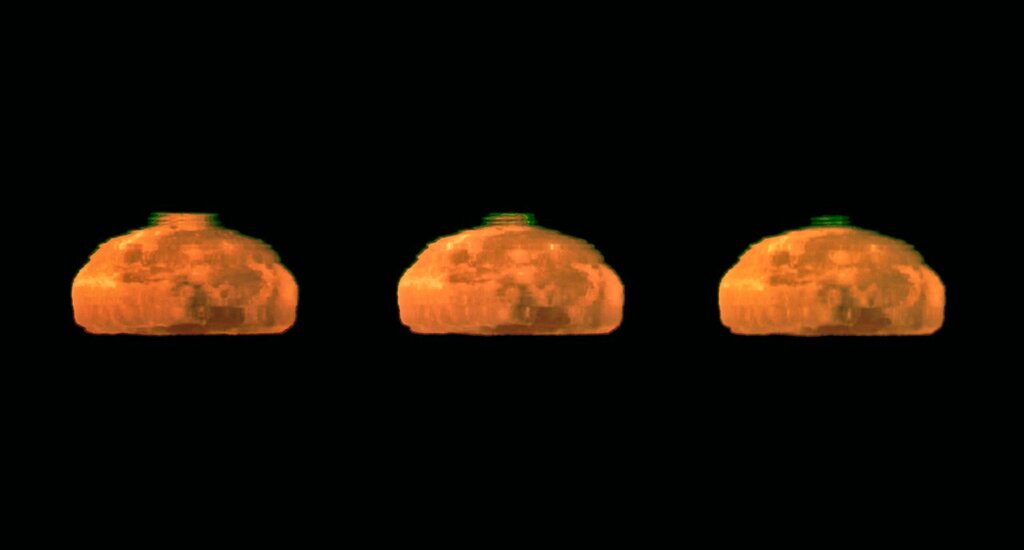
Rare Moon Green Flash
In Cerro Paranal, the 2600-meter-high mountain in Chile’s Atacama Desert that is home to ESO’s Very Large Telescope, the atmospheric conditions are so exceptional that fleeting events such as the green flash of the setting Sun are seen relatively frequently. Now, however, ESO Photo Ambassador Gerhard Hüdepohl has captured an even rarer sight: a green flash from the Moon, instead of the Sun. The photographs are probably the best ever taken of the Moon’s green flash.
Gerhard was surprised and delighted to catch the stunning green flash in this series of photographs of the setting full Moon crossing the horizon, taken on a clear early morning from the Paranal Residencia.
The Earth’s atmosphere bends, or refracts, light — rather like a giant prism. The effect is greater in the lower denser layers of the atmosphere, so rays of light from the Sun or Moon are curved slightly downwards. Shorter wavelengths of light are bent more than longer wavelengths, so that the green light from the Sun or Moon appears to be coming from a slightly higher position than the orange and red light, from the point of view of an observer. When the conditions are just right, with an additional mirage effect due to the temperature gradient in the atmosphere, the elusive green flash is briefly visible at the upper edge of the solar or lunar disc when it is close to the horizon.
Tuesday, October 3, 2023
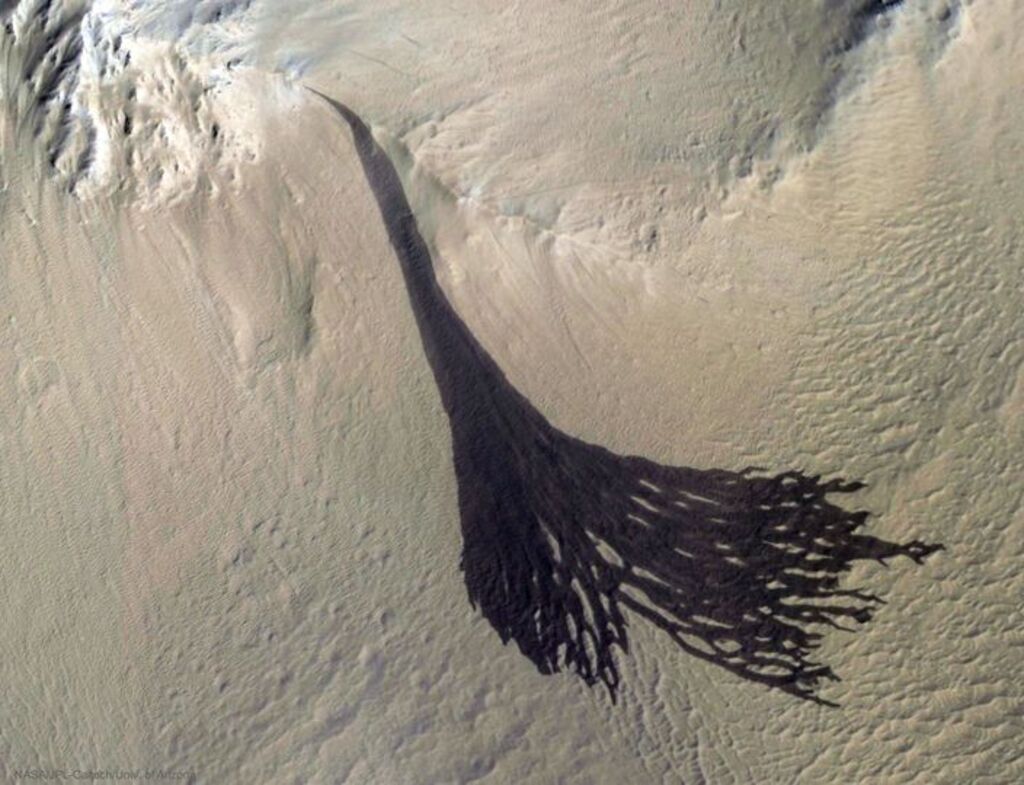
Dark Slope Streaks Split on Mars
What is creating these dark streaks on Mars? No one is sure. Candidates include dust avalanches, evaporating dry ice sleds, and liquid water flows. What is clear is that the streaks occur through light surface dust and expose a deeper dark layer. Similar streaks have been photographed on Mars for years and are one of the few surface features that change their appearance seasonally.
Wednesday, October 4, 2023
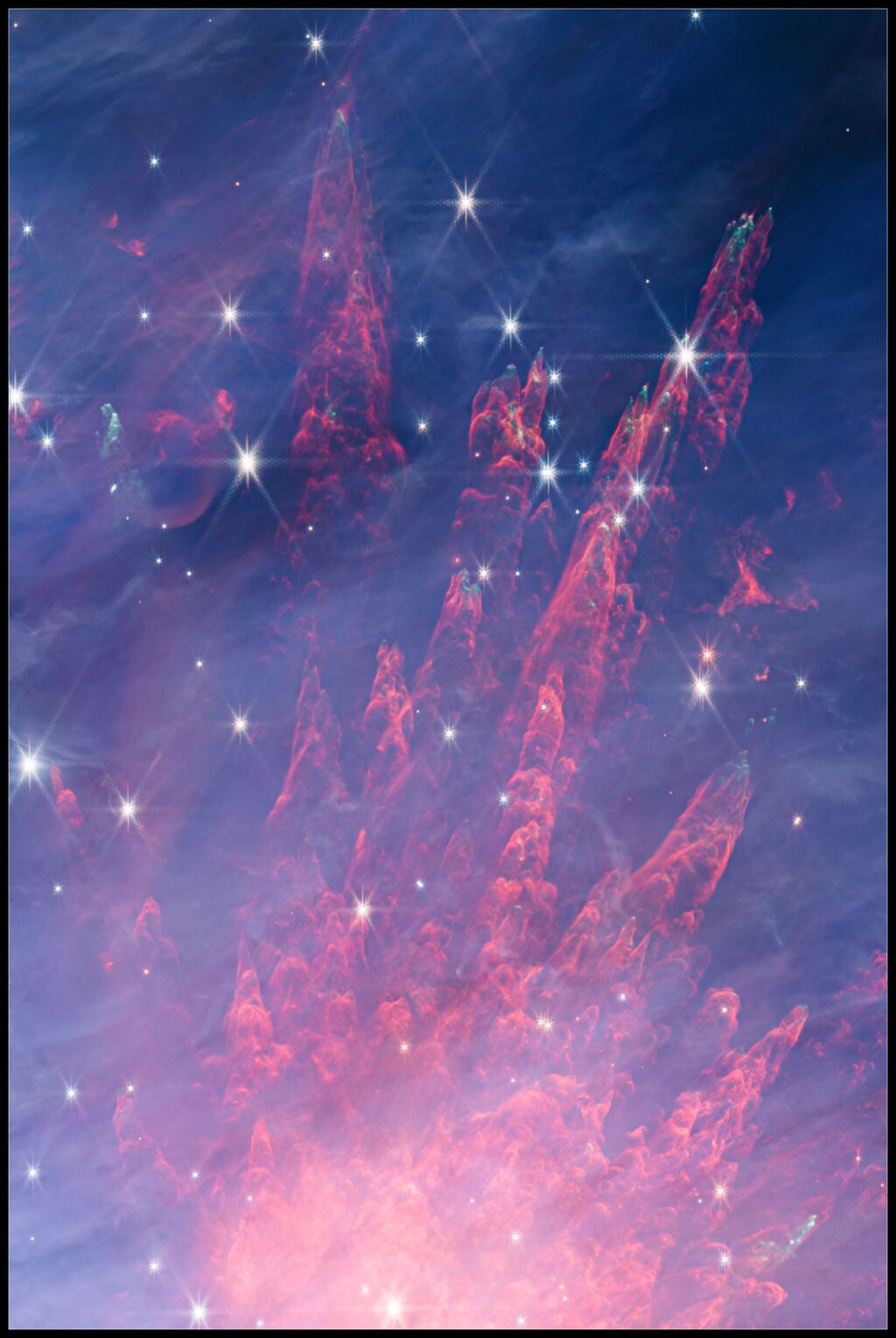
Explosive Fingers in Orion
This cutout from the new NASA/ESA/CSA James Webb Space Telescope short-wavelength infrared image (https://www.esa.int/Science_Exploration/Space_Science/Webb/Webb_s_wide-angle_view_of_the_Orion_Nebula_is_released_in_ESASky) of the Orion Nebula shows bright 'fingers' of gas racing away from an explosion that occurred roughly 500 to 1000 years ago in the heart of a dense molecular cloud behind the nebula, perhaps as two young massive stars collided. The dense cloud is called Orion Molecular Cloud 1 and lies to the northwest of the visible Trapezium stars in Orion.
The fingers are predominantly red, indicating emission from molecular hydrogen gas that has been shocked by the immense energy pouring out from the explosion site. Near the tips of some of the fingers, the emission turns green due to hot iron gas and even white in some cases where the gas is at its hottest. Further down, the fingers seem mostly turbulent, but in some places, the flow appears laminar.
The Orion Nebula lies roughly 1300 light-years from Earth in the so-called 'sword' of the constellation of Orion the Hunter, and the image shows a region that is 4 by 2.75 light-years in size.
Thursday, October 5, 2023
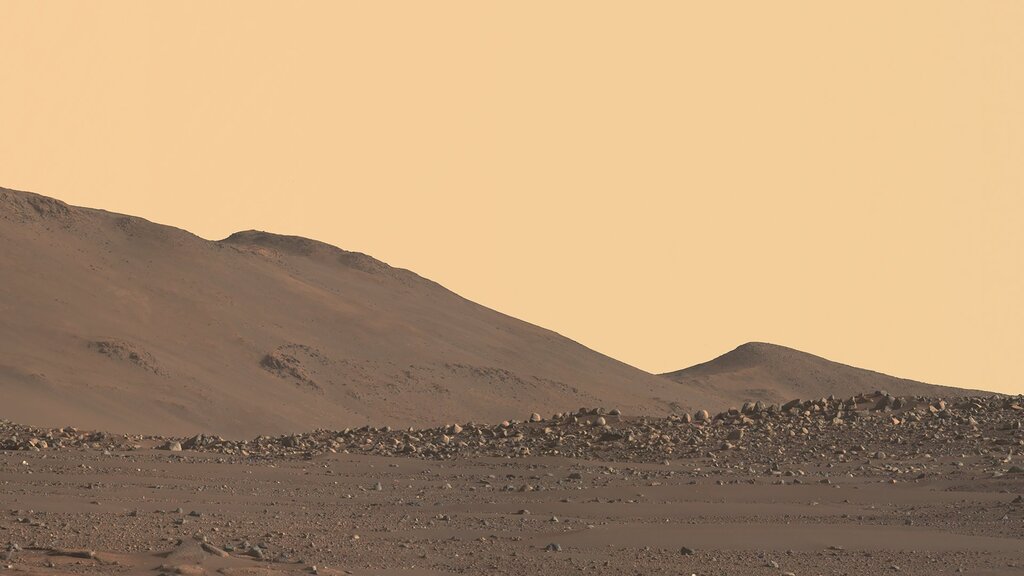
Jezero Crater
Another desolate, rocky view of Jezero Crater on Mars, taken by NASA's Perseverance rover on October 1, 2023.
Friday, October 6, 2023
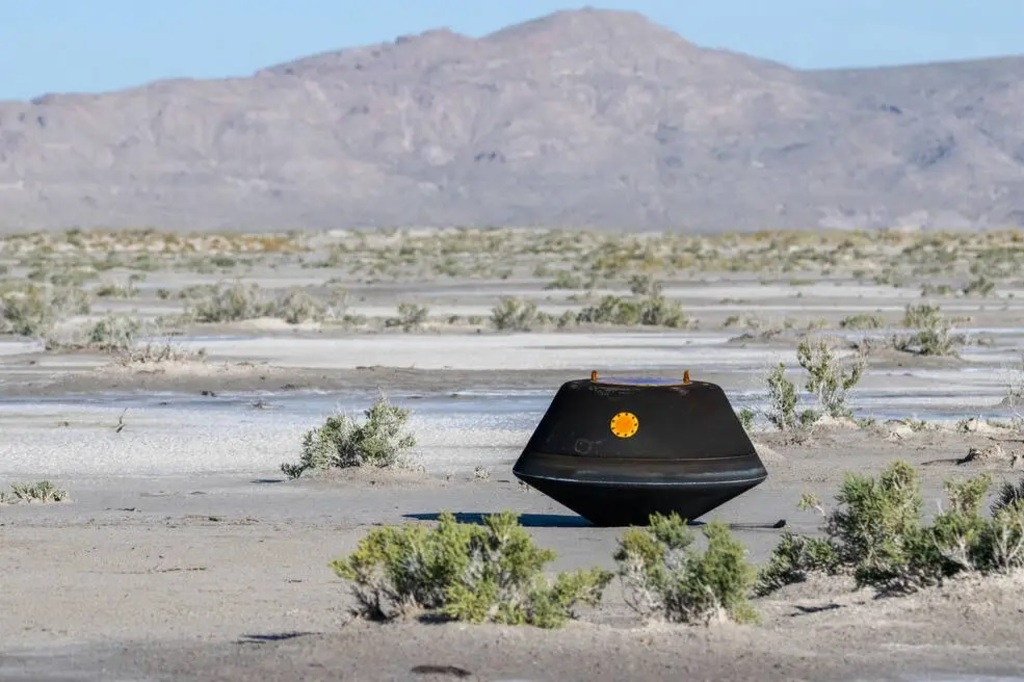
The Sample Has Landed
The sample return capsule from NASA’s OSIRIS-REx mission is seen shortly after touching down in the desert, on Sunday, Sept. 24, 2023, at the Department of Defense’s Utah Test and Training Range. The sample was collected from the asteroid Bennu in October 2020 by NASA’s OSIRIS-REx spacecraft.
Following a public unveiling of the United States’ first asteroid sample at 11 a.m. EDT Wednesday, Oct. 11, NASA will host a media teleconference and separate in-person interviews in English and Spanish with experts from the agency and the University of Arizona.





